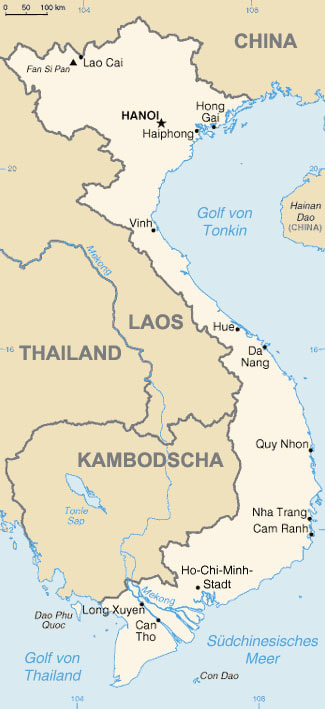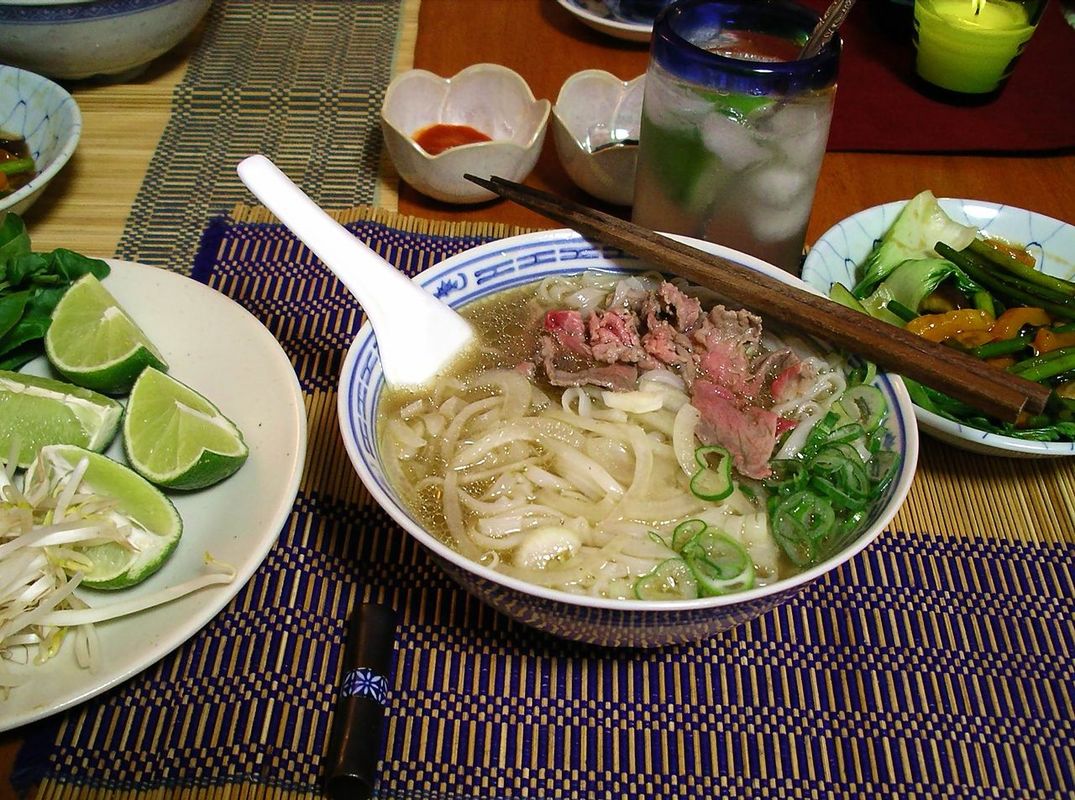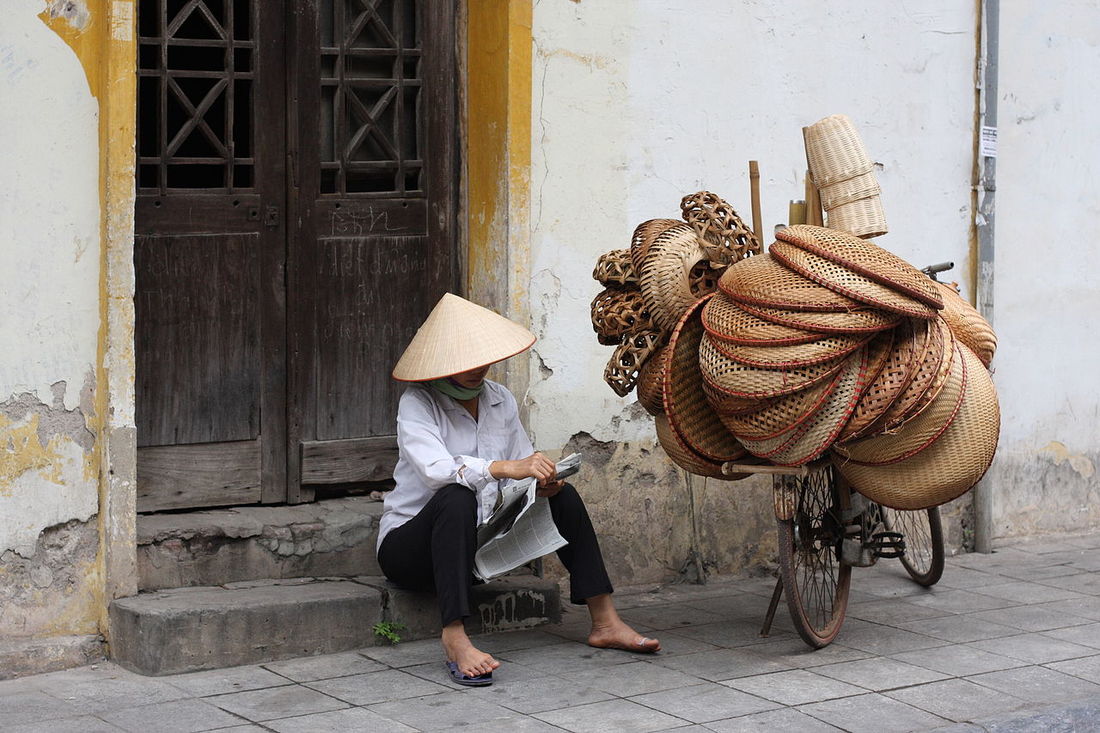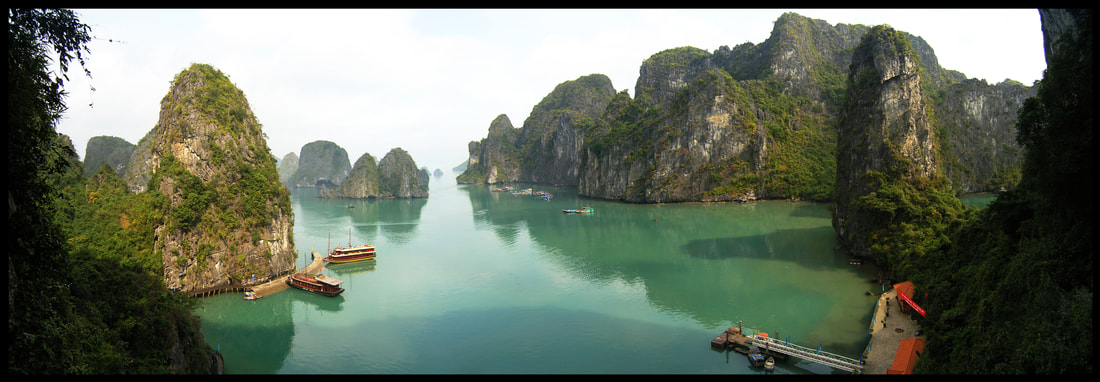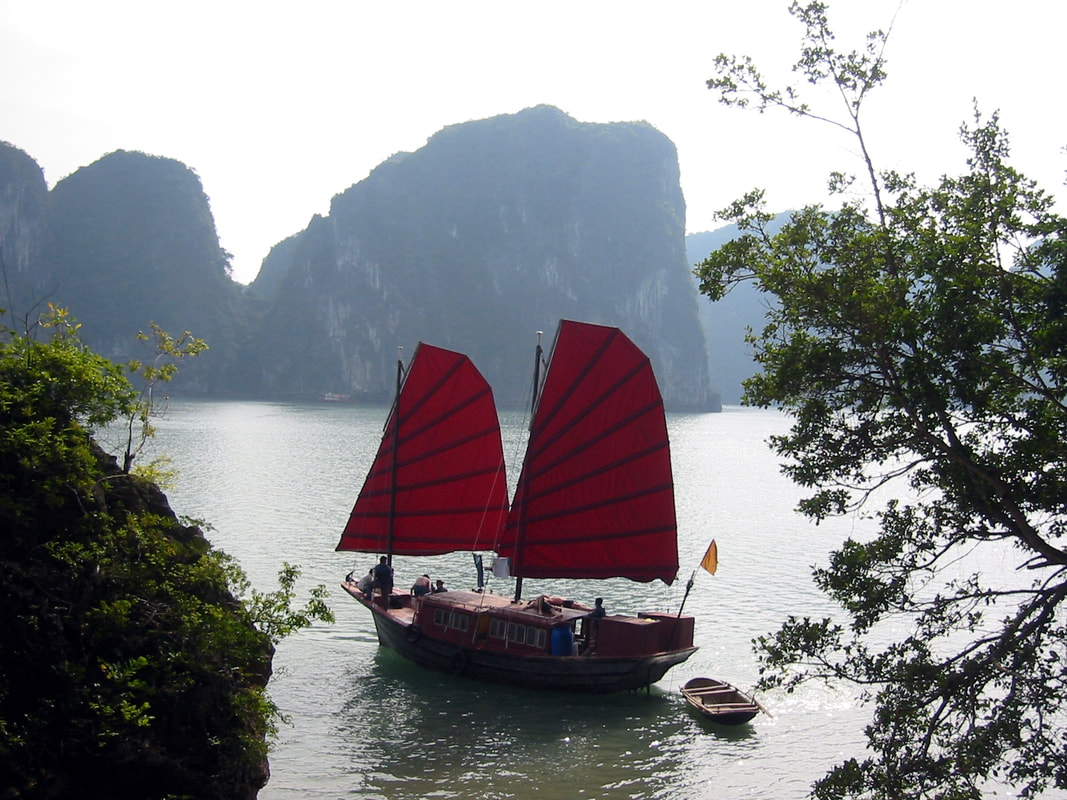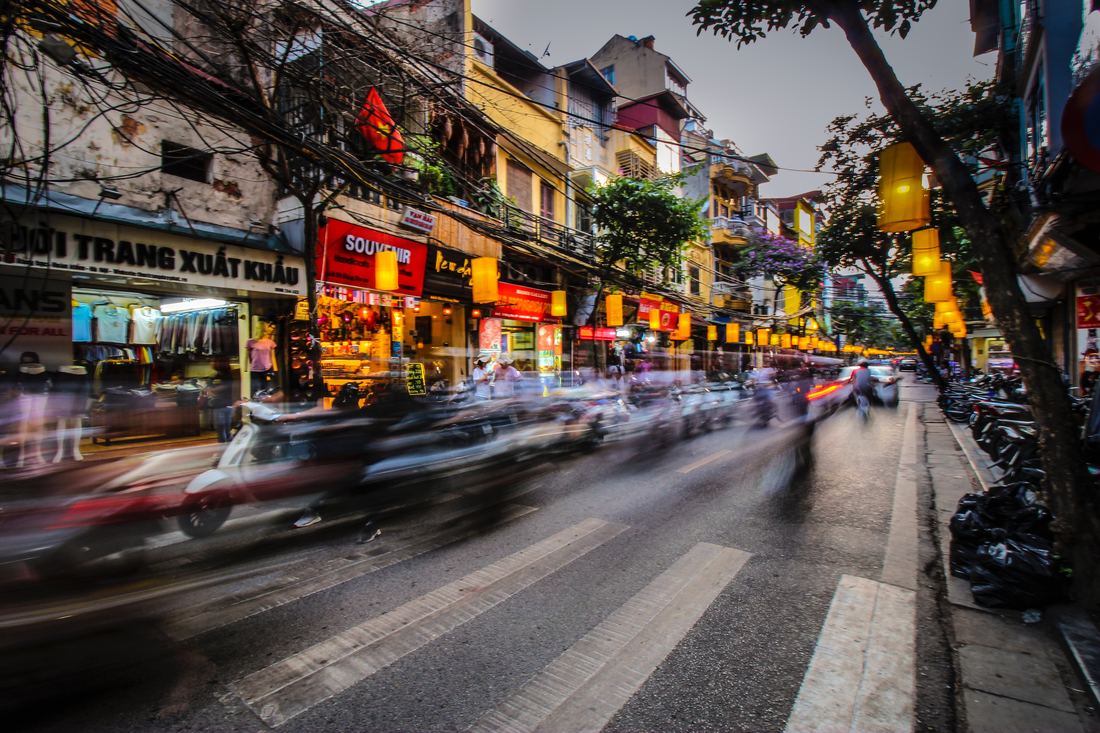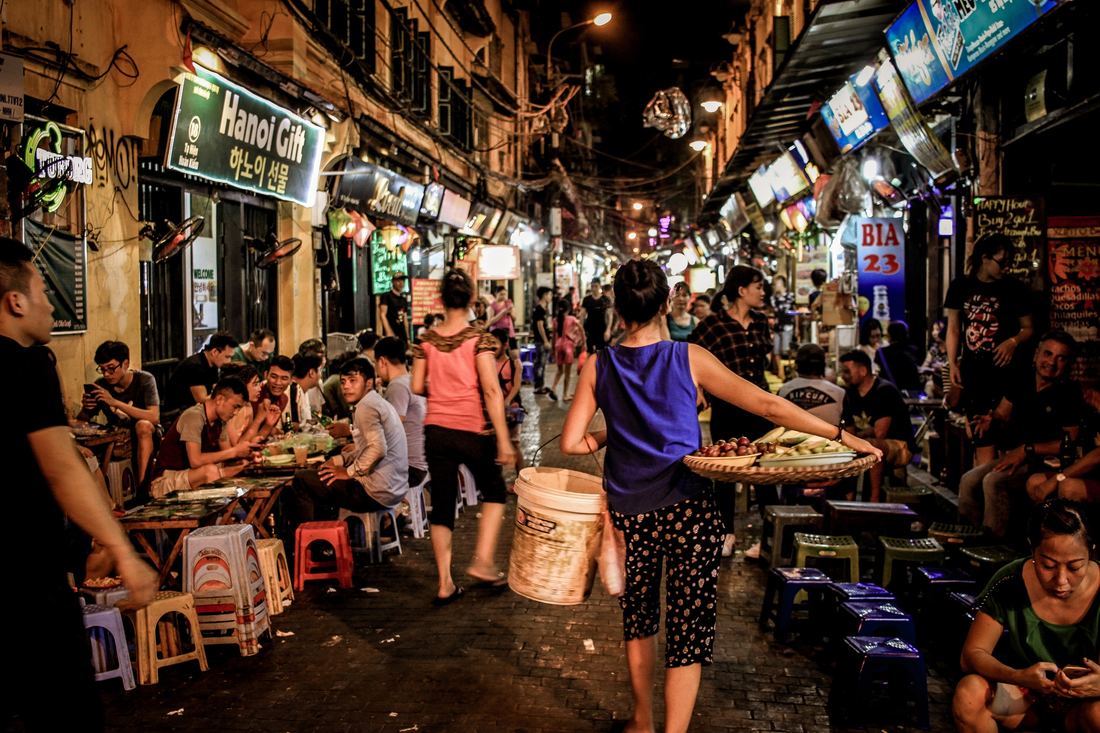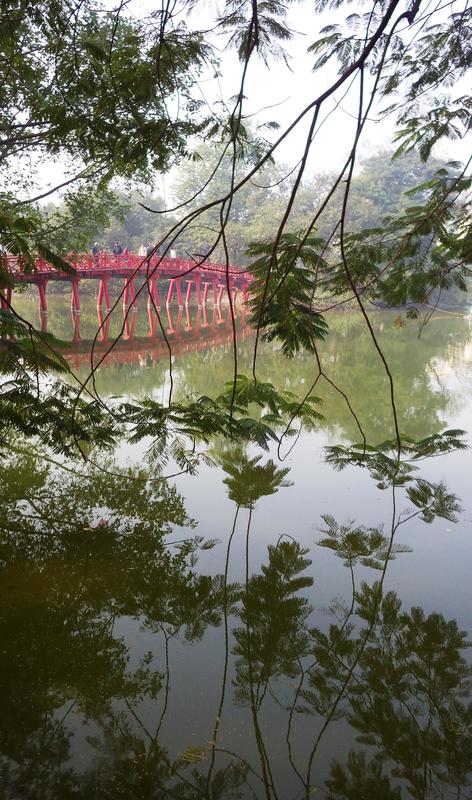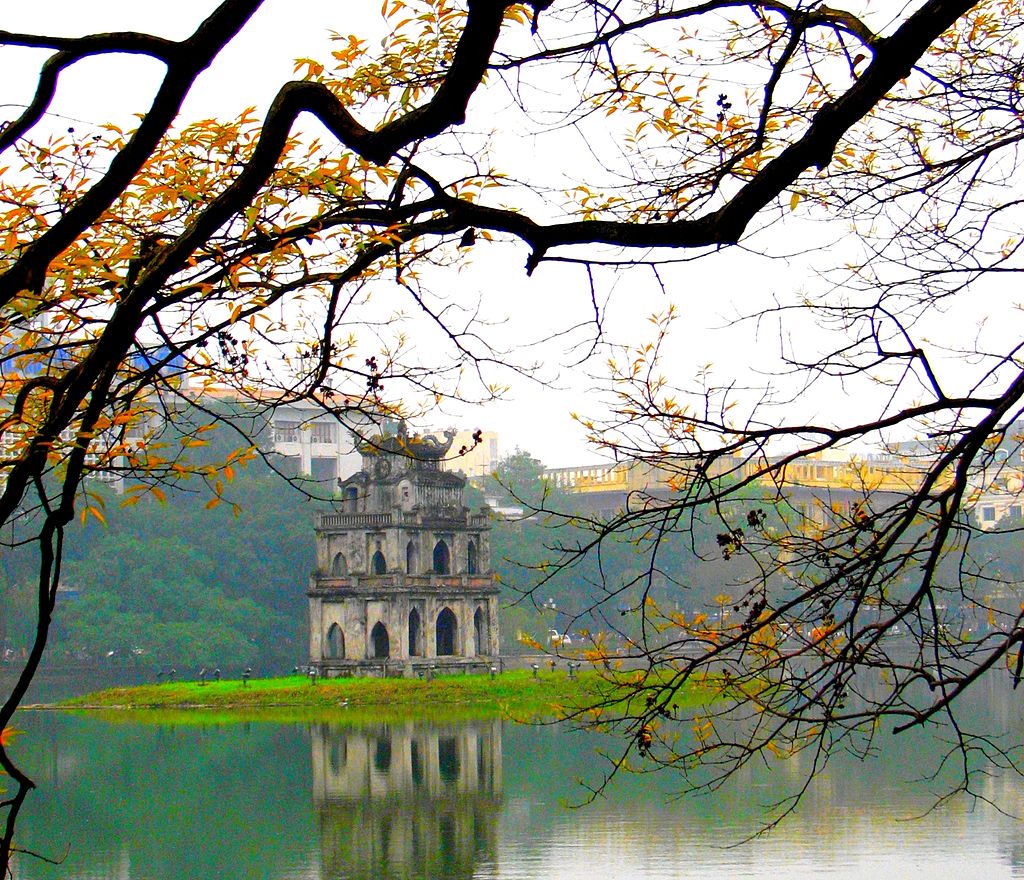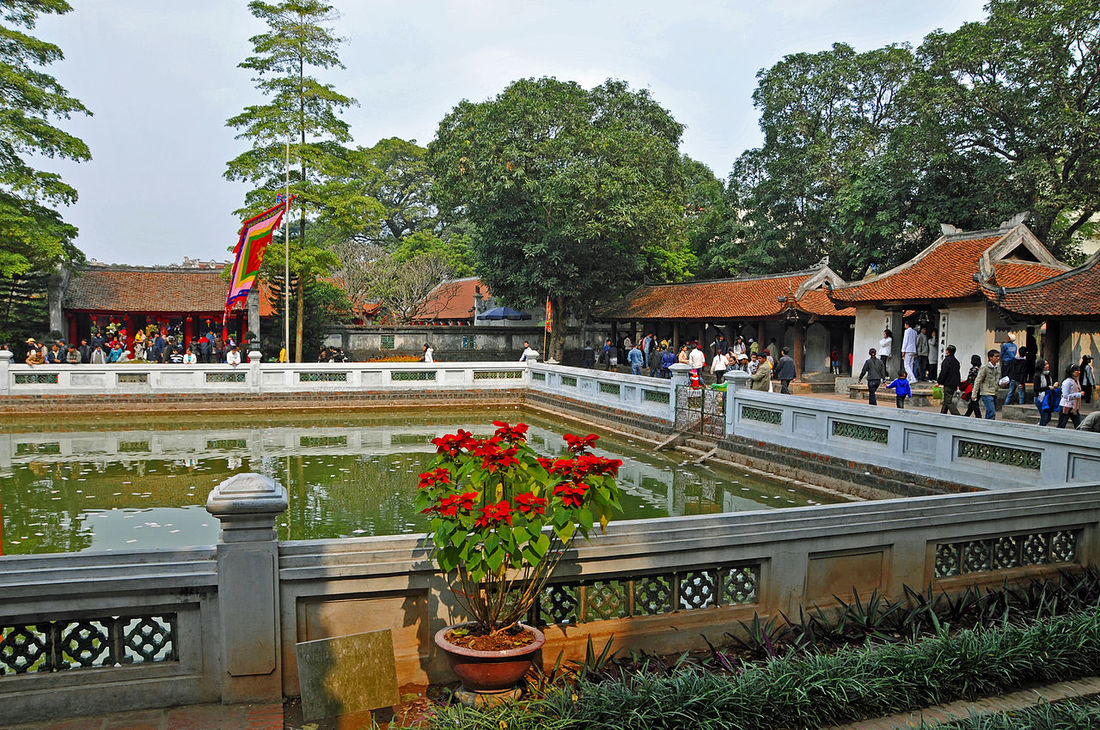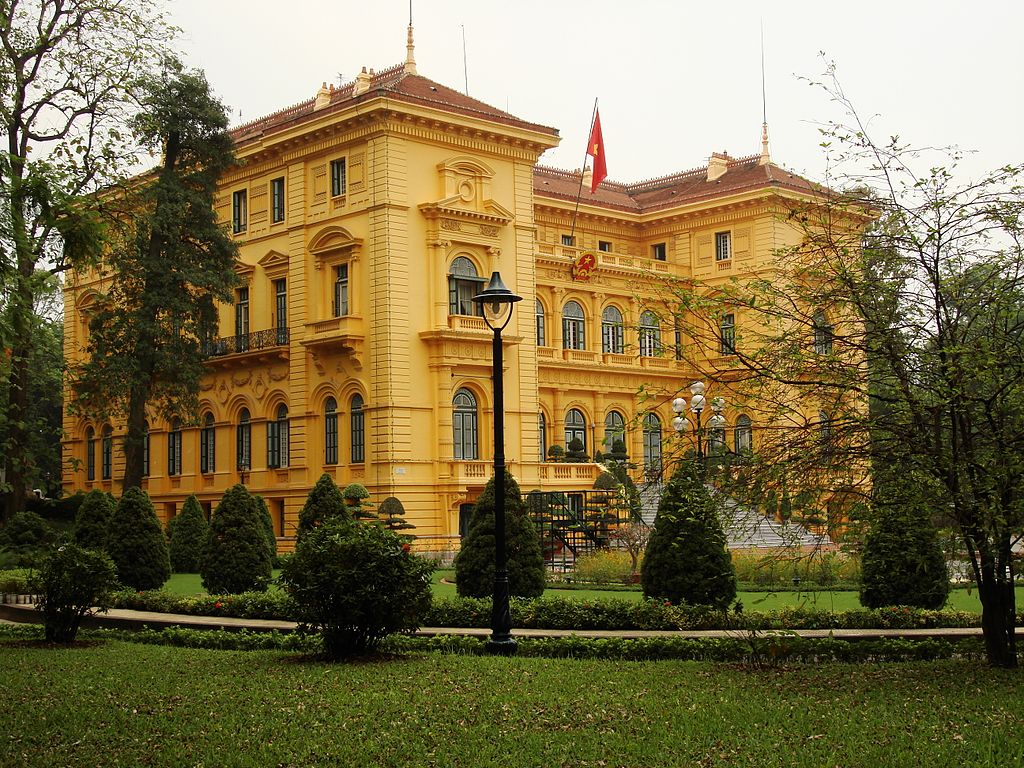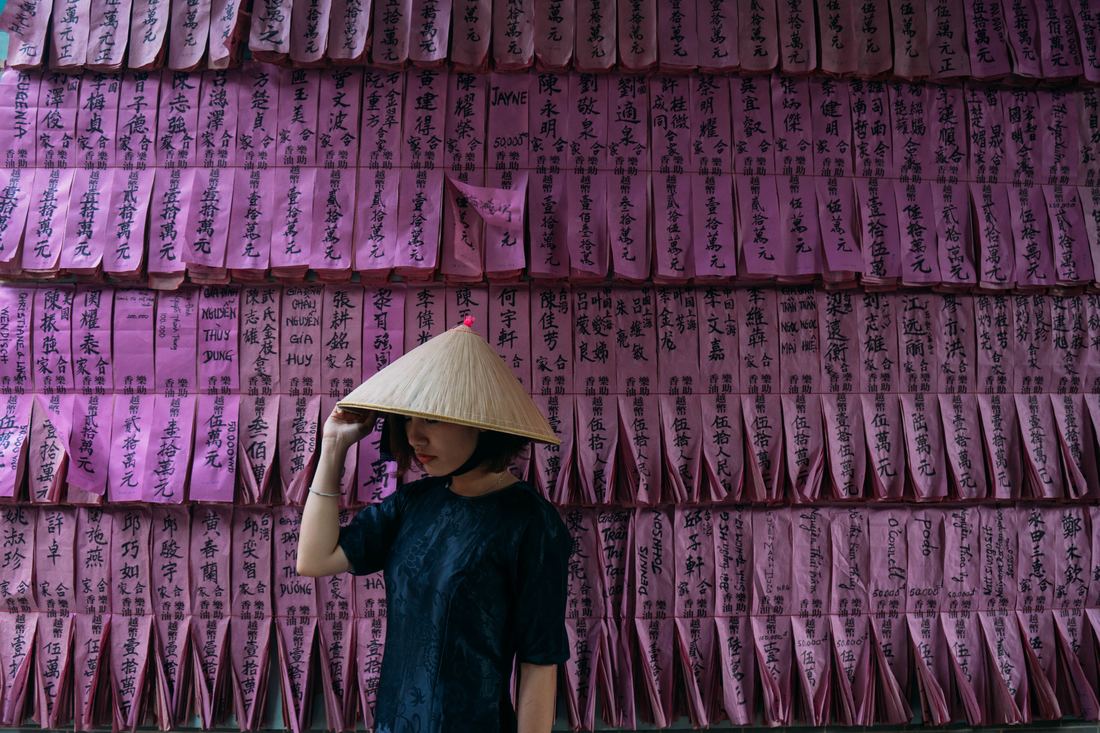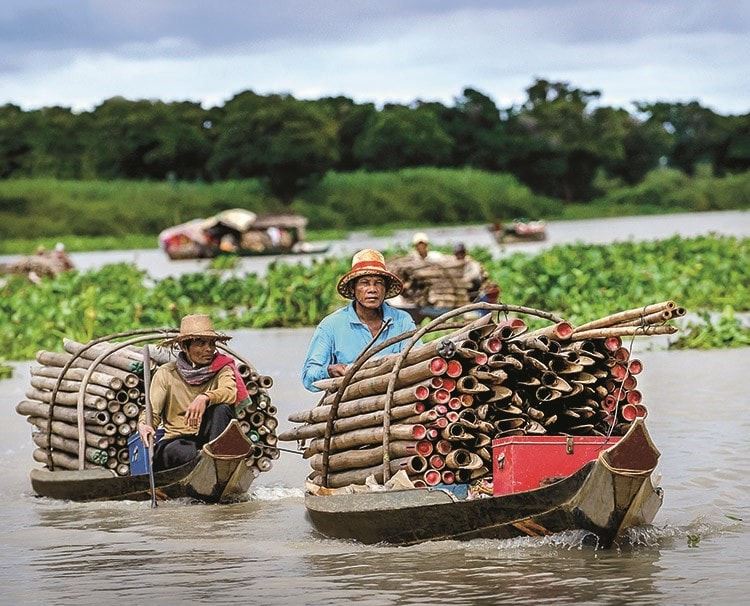|
Once synonymous with tragedy and conflict, Vietnam is experiencing a rebirth. Now decades after the U.S. pullout from South Vietnam, the country shows few remaining scars from that conflict or the protracted War of Independence from France that preceded it. Many historical sites have been fully restored, the country's economy is booming and the infrastructure for tourism is developing rapidly. Visitors no longer worry about staying in contact with home—Internet cafes are everywhere. The ancient and modern coexist: Cell phones and gleaming motorbikes are ubiquitous in the towns and villages, but people still till the rice fields with the help of bullock plows. The country's history of conflict—both internal and with others—could lead you to conclude that the Vietnamese thrive on a certain degree of contentiousness. That's just not the case. Although older Vietnamese may find the pace of change somewhat dizzying, there is overwhelming support for the advances the country is making. Tourism is helping Vietnam ride the crest of that wave, and the country has become one of the best travel bargains in Asia. Interested in traveling to Vietnam & Cambodia?
Click here for a special offer... Guide to Cambodia |
|
Ho Chi Minh City (Saigon)
The Vietnamese seem to use the names Saigon, Ho Chi Minh City, or simply "HCMC" interchangeably. By any name, Ho Chi Minh City is the economic center of Vietnam, although geographically it's 700 mi/1,120 km south of Hanoi. With a rapidly growing population, new hotels, chic bars and trendy clubs, Ho Chi Minh City is enjoying a climate of prosperity and growth. On Ho Chi Minh City's doorstep is the Mekong delta, with its burgeoning markets, luminous green rice fields, Khmer pagodas, and fruit and flower orchards. The best way to view this tropical wonderland is by boat—you can rent a tour boat in the delta towns of Ben Tre, Vinh Long and Can Tho. The old Saigon landmarks—the Notre Dame Cathedral, the Rex Hotel, the Hotel de Ville—are still there. But new office towers, built by multinational corporations now setting up shop in Vietnam, are radically changing the skyline. There are nearly 200 temples and pagodas in the city. For lovers of recent history, the Xa Lao Pagoda is the site where a monk immolated himself to protest the Diem regime in 1963. In the reception hall of the Giac Lam Pagoda you can see the portraits of monks who passed away years ago (below the portraits, note the monks' funeral tablets inscribed in ancient nom, the original Vietnamese script). The Emperor of Jade Pagoda is filled with gilded figures and papier-mache statues of Buddhist and Taoist divinities. Ho Chi Minh City's millions of motorbikes emit a constant roar and palpable exhaust, and the city's two- and three-hour traffic jams are legendary. Give yourself plenty of travel time if you go exploring. The old CIA building now houses a coffee house where you can view the traffic from the balcony while enjoying their superb coffee as seen below. |
Things to Do in Ho Chi Minh City
Historic Sites Reunification Palace - History buffs should stop by the Reunification Palace, where the South Vietnamese government officially turned over power to the North on 30 April 1975. During the fall of Saigon, North Vietnamese tanks broke down the gates and raised the communist flag. It's a trip back in time, particularly the "strategy rooms" in the basement and the upper floors filled with 1960s furnishings. Museums
Ho Chi Minh City Museum - Formerly known as the Revolutionary Museum, this museum showcases very old photos of the city, documents relating to its founding, and archaeological and ethnic survey items. 1 Nguyen Tat Thanh St. National History Museum - This museum portrays the history of the Vietnamese people through displays, exhibits and artifacts of ethnological and cultural significance. Items include stone tools, cannons, Roman coins and more. Display texts are available in English, Vietnamese and French. Tuesday-Sunday 8-11 am and 1:30-4:30 pm. http://baotanglichsuvn.com Neighborhoods and Districts
Dong Khoi Street - One of the primary commercial centers of the city, this street has beautiful examples of fine French architecture that include the Central Post Office, the Notre Dame Cathedral and the Saigon Opera House. It also offers cafes, boutiques, shops and restaurants. Le Loi - Named after the founder of the Le Loi Dynasty, this street is one of the key shopping areas in the city. It has art galleries, spas, small fashion boutiques and high-end restaurants. Religious Sites
Basilica Notre Dame de Saigon - Situated in the heart of Ho Chi Minh City, Basilica Notre Dame de Saigon is part of the architectural and religious legacy of the French. It was constructed 1877-80, and all materials were imported from France, including the set of six huge bells that hang in the two 190-ft/58-m bell towers. The decoration is in the Romanesque and Gothic styles. In 1960, the Vatican established Vietnamese religious orders and appointed a bishop to Ho Chi Minh City. Two years later, the cathedral was named Basilica Notre Dame de Saigon. Worshippers today include both Vietnamese Catholics and visitors. Mass is held on Sunday and is given in French, English and Vietnamese. Caodai Holy See Temple - The spiritual center of the Caodai sect was founded in 1926 by Ngo Minh Chieu. This religious movement was created by drawing on aspects of Buddhism, Taoism, Confucianism, Islam, Spiritualism and Catholicism. The temple was constructed 1933-55 in a unique architectural style that reflects its intriguing mix of traditions. In many ways, Caodai resembles a Christian cathedral. It includes aisles, square towers and a central nave with upper gallery. Decoration, however, is extravagant and colorful. The three principal colors of Caodai are yellow for Buddhism, blue for Taoism and red for Christianity. Four ceremonies are held each day. About 60 mi/100 km northwest of Ho Chi Minh City. It's best seen on an organized tour from Ho Chi Minh City; journey time is about two hours. Jade Emperor Pagoda - Regarded as one of the finest temples in Vietnam, the Jade Emperor Pagoda is a must-see on any travel itinerary. This glorious temple was built by the Chinese community at the turn of the 20th century and is beautifully decorated with elaborate carvings from top to bottom. The image of the Jade Emperor stands in the main room surrounded by other deities such as the Taoist God of Longevity. Thick with incense smoke and filled with devout worshippers, the temple is extremely atmospheric. |
|
Halong Bay is a slice of the South China Sea about 75 miles southeast of Hanoi that is speckled with more than 2,000 isolated limestone peaks (known as karsts) rising straight up out of the water. A group of 1,900 of these islets has been declared a UNESCO World Heritage site.
Halong Bay is now one of Vietnam's biggest attractions, and tour groups flock to the area. Ethereal Ha Long Bay is considered by many to be the Eighth Natural Wonder of the World. It is possible to spend the night on board an elegantly appointed ship designed with all the modern conveniences to ensure smooth sailing. The backdrop of the bay’s magnificent scenery as well as dramatic limestone cliffs and rock formations provide you with the perfect setting for a memorable sojourn. Tours from Hanoi include a leisurely boat trip through the craggy islands. Some boat operators will drop anchor so you can dive into the calm waters or kayak when the weather is cooler. Other tours lead you through grottoes and caves with bizarre rock sculptures. (Be sure to take a flashlight.) Try to get a tour that lets you sleep overnight on the boat. Accommodations are simple but adequate (private cabin, shared toilet), and the views at sunset and sunrise are unforgettable. At adjacent Cat Ba Island National Park, you can see monkeys, explore caves and swim over coral reefs. Nearby Yen Tu Mountain hides a Buddhist temple in a lovely setting. |
Hanoi
|
Hanoi, the capital of North Vietnam from 1954-1976, and of French Indochina for 70 years before that, is a river city 700 mi/1,120 km north of Ho Chi Minh City.
Hanoi is dynamic, chaotic and rapidly changing. Literally millions of motorbikes dodge, weave and honk through the narrow streets of the Old Quarter and down the broad avenues of the Colonial District. The venerable old buildings, many beautifully restored, give this part of the city its character, and it is one of the most popular areas for travelers to stay. Fortunately, the historic buildings, some of them now luxurious five-star hotels that offer a taste of colonial-era splendor, are as much loved by the locals as they are by visitors, but a bold new Hanoi is emerging: one of mega malls, condos and high-rise office towers. The downside to development, however, is a huge annual increase in cars and motorcycles causing noise and pollution, and dust from construction sites. Hanoi is a beguiling city at a crossroads where ancient culture and traditions collide with the modern world. It will assault your senses, but it will also win you over with its many and undeniable charms. |
Things To See and Do In Hanoi
Historic Sites Co Loa Citadel - Co Loa Citadel near Phong Khe, just north of Hanoi, was the first fortified citadel in Vietnam and was the national capital during the reign of Ngo Quyen. The expansive site dates from 257 BC and features outer ramparts and guard towers. It has also yielded many Bronze Age relics including bronze drums, plowshares, hoes and axe heads. In the center of the citadel are temples dedicated to King An Duong Vuong, and the annual Co Loa Festival in February pays homage to him. Dong Anh District (10 mi/16 km north of central Hanoi; buses depart every 15 minutes from Hanoi's My Dinh bus station) Hoa Lo Prison - Hoa Lo Prison was originally built by the French when they were a colonial power in the late 1880s. It was designed to hold 600 inmates, mostly political prisoners. By the mid-1950s, however, more than 2,000 people were held there under inhumane conditions. In the 1960s-70s, Hoa Lo held American prisoners of war, including now-U.S. Sen. John McCain. By then, American pilots had dubbed the infamous facility the Hanoi Hilton. Much of the once-huge facility has been demolished to make way for high-rise developments in the area, but part of the building has been retained as a small museum. The permanent exhibition includes a guillotine and an array of shackles, whips and other tools of torture dating from the French-colonial period. There is also a section on the 300 U.S. POWs who were held there. Guides are available. Hoa Lo and Hia Ba Trung streets Ho Chi Minh's Mausoleum - Ho Chi Minh's Mausoleum, an imposing structure built to honor the late president, is one of the most revered (and most visited) sites in Vietnam, and there are often long queues for entry. It is located at the center of Ba Dinh Square where Ho Chi Minh read the Declaration of Independence in 1945. He died in 1969 of heart failure, and the mausoleum was built to house his embalmed body. Once inside, visitors must walk in silence and have only a few moments in front of the glass coffin in which "Uncle Ho" lies dressed in traditional khaki clothes and rubber sandals. Visitors should dress in a respectful manner (no T-shirts or shorts). Cameras, hats and bags are not allowed. Hung Vuong Street http://bqllang.gov.vn Ho Chi Minh's Stilted House - This simple wooden house is located within the grounds of the Presidential Palace complex. Modeled on a traditional house from the rural northwest, it was home to Ho Chi Minh from 1958 to 1969. It is said that he chose to live in the house rather than the palace as an example to the people that he was a humble leader, while others say it was to avoid possible bombing of the palace by American planes. Set in a lovely garden at the end of a tree-lined path from the Presidential Palace, the house includes a sparsely furnished bedroom and study. One Pillar Pagoda - A Hanoi landmark, the original pagoda was built by the Emperor Ly Thai Tong, who ruled 1028-54. Today's pagoda is actually a replica, because the original structure was destroyed by the French before they left Hanoi in 1954. Built of wood around a single stone pillar, it is designed to resemble a lotus blossom. Visitors should wear long pants or a long skirt. Located near the Ho Chi Minh Museum and Ba Dinh Square Rising Sun Bridge & Ngoc Son Temple - The iconic Huc Bridge, or Rising Sun Bridge, at Hoan Kiem Lake leads to Jade Island and Ngoc Son temple. The bridge itself is probably one of Hanoi's most photographed sights because of its startling color and design, which includes 32 pillars creating 15 spans. The small temple on the island was built in dedication to national hero Tran Hung Dao, who is said to have defeated 300,000 troops of the Mongol emperor, Kublai Khan. Located at the northern end of the lake. Access the lake from Dinh Tien Hoang or Le Thai To roads Temple of Literature - Dating from 1070, the Temple of Literature makes for a pleasant retreat from the bustling Hanoi streets. It was built by Emperor Ly Thanh Tong, who dedicated it to Confucius and scholars. The building is a splendid example of traditional architecture, and it features five separate courtyards. Quoc Tu Giam Street (1 mi west of Hoan Kiem Lake) Museums Museum of the Vietnamese Revolution -Established in 1959, this 30-room museum features more than 80,000 artifacts, documents and photos to illustrate the history of the Vietnamese nation from the mid-19th century to the present. Its three main topics are the nation's struggle for independence (1858-1945), 30 years of resistance against aggressive forces (1945-75) and the road to building a modern Vietnam. 216 Tran Quang Khai St. Museum of Women - The Museum of Women is a revolutionary one of its kind in Vietnam. It recognizes the role of women in Vietnam's history and culture, and highlights their roles in the country's many military conflicts. The daily life of women throughout the ages and political strife is another main focus, acknowledging the female population's role in the family and public sector. Daily 8 am-5 pm. 36 Ly Thuong Kiet St. http://www.womenmuseum.org.vn Vietnam Fine Arts Museum - This important museum is in a beautiful 1930s building that was formerly the colonial-era French Ministry of Information. Its impressive collection charts the country's history of art, with exhibits that include both ancient and contemporary works. Particularly impressive is a display dedicated to the art of lacquer work. The techniques used are clearly explained in English. Other exhibits feature displays of woodcuts and silk painting. Ancient works include impressive Buddha images, some dating from the 11th century. There is also a gift shop selling replica works, trinkets and contemporary art. Daily 8:30 am-5 pm. 30,000 VND adults. http://vnfam.vn Vietnam Museum of Ethnology - Vietnam's diverse population comprises 54 ethnic groups, and the Museum of Ethnology acts as a public museum and research center. It features exhibitions ranging from priceless artifacts to such everyday objects as baskets, musical instruments and the clothing of the country's various ethnic groups. An outdoor exhibition area features an Ede long house, a Tay stilt house, a stilted Yao house and others. Daily 8:30 am-5:30 pm. 40,000 VND. Nguyen Van Huyen Road, Cau Giay Street (5 mi/8 km from the city center) http://www.vme.org.vn Vietnam National Museum of History -The Museum of History is housed in what was once the French consulate and holds an exhaustive collection spanning all the way from ancient Vietnamese history. The prehistoric relics and excavations of Han tombs are interesting to look at, but English translations are not common on the explanatory plaques. Your best bet is to go with a guide or tour group. Daily 8 am-noon and 1:30-5 pm. 40,000 VND. Neighborhoods and Districts The old Hanoi is contained within four districts: Hoàn Kiếm, Ba Đình, Hai Bà Trưng and Đống Đa. These districts are vastly contrasted by the skyscrapers and shopping malls in the newer Western districts Cau Giay, Thanh Xuan, Ha Dong and Nam Tu Liem. Hoàn Kiếm District - center of the city, with its core in the Hoan Kiem Lake (Sword Lake). You most likely will stay and visit this district first. The fascinating Old Quarter covers its northern half while its southern half has mostly French architecture with shady streets and villas. A large number of foreign embassies are located in the southern half of Hoan Kiem. The district also houses a majority of Hanoi's tourist attractions, including Hoan Kiem lake, Ngoc Son temple, The Huc Bridge, the neo-Gothic Hanoi Grand Cathedral (St. Joseph's Cathedral), Hoa Lo prison, Eiffel-designed Long Bien Bridge, Hanoi Opera House and several museums. Ba Đình District: political center of Vietnam, housing the national assembly building, president's palace, Ho Chi Minh mausoleum and most embassies. It also contains the One-Pillar Pagoda and the recently discovered Thang Long Citadel. The French Quarter with large shady boulevards is in its eastern part. Its northeastern part surrounds the Truc Bach lake where John McCain's plane was shot down. Its western part is mostly residential with a large number of new skyscrapers around the Japanese Embassy on Lieu Giai street. Hai Bà Trưng District: located south of Hoan Kiem with the largest population of all districts. Its northern part also has French-style streets with big trees. A large number of universities, including the Hanoi University of Technology are located here. Times City, in the southeast of the district, is a huge shopping mall with an aquarium located within the complex. Đống Đa District: one of the original four central districts, is mostly residential. The Temple of Literature - Imperial Academy (Văn Miếu - Quốc Tử Giám), Vietnam's first university, is located in the north end of the district, bordering Ba Dinh. Tây Hồ District: named after West Lake (Hồ Tây), one of the largest natural lakes of Vietnam. Thanks to its serenity and close proximity to downtown, it is a high-end residential area housing a large population of expatriates. Cầu Giấy District: houses a large number of universities, including the National University's main campus and Hanoi University of Education. The Museum of Ethnology, one of foreign travelers' favorite, is located in this district. Its southwestern part bordering Nam Tu Liem district has numerous high-rises, including Keangnam Hanoi Landmark Tower, Vietnam's tallest building. This is where you see a completely different side of a modern Hanoi, in contrast to the old inner districts. Long Biên District: the only urban district located east of the Red River, it is named after the iconic Long Bien Bridge. The Bat Trang ceramic village and Le Mat snake village are located here. Thanh Xuân District: houses Royal City, Asia's largest underground mall. Inside this mall, there are an ice-skating rink and a water park. The plaza above ground have large, cheesy looking Greek god statues. |
Small Villages Along the Mekong River - My Tho, , Sa Dec, Xeo Quyt, Cai Be
|
The best way to experience rural Vietnam is to cruise along the Mekong where you will feel as if you are transported back in time to another era, where the rhythms of the countryside move at a slower pace and allow for fascinating glimpses into a traditional way of life. Experience the lively hustle and bustle of open-air and floating markets, offering exotic produce. Many small villages along the Mekong are unspoiled by tourism. Visit rattan, rice paper and silk workshops which still use traditional manufacturing methods. |

